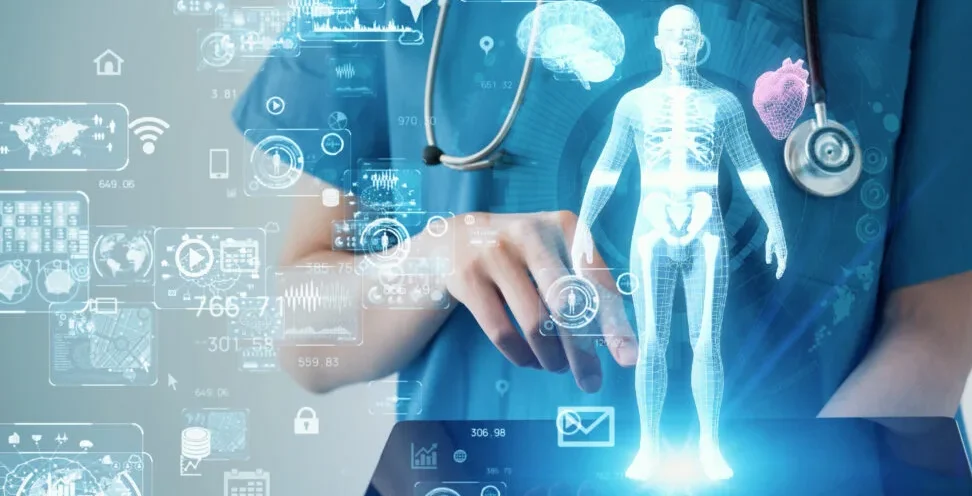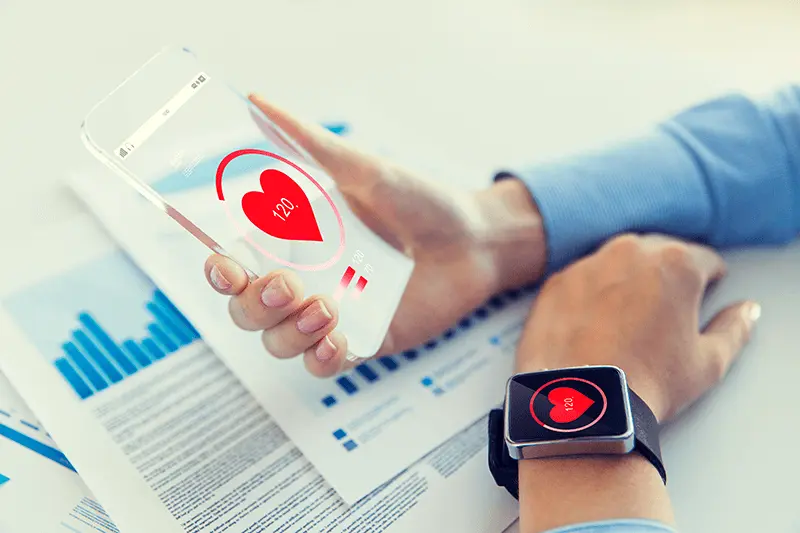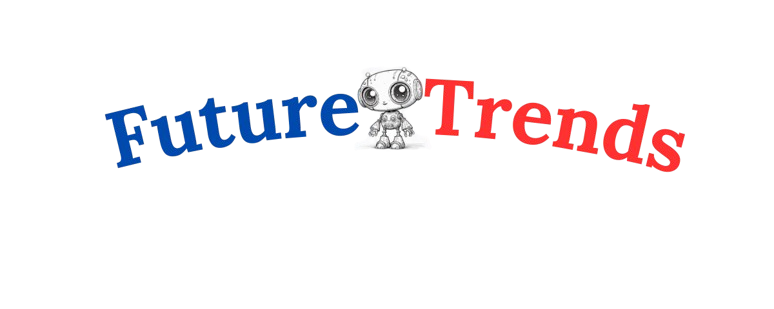
Overview
The integration of technology solutions in healthcare has fundamentally changed the way medical services are delivered and managed. From patient care improvements to advancements in medical research, the influence of digital solutions in the healthcare sector is undeniable. These technological innovations aim to enhance efficiency, reduce costs, and ultimately lead to better patient outcomes. As healthcare providers increasingly adopt these technologies, the industry is set to experience unparalleled growth and evolution.
The Shift Towards Technology-Driven Healthcare
The incorporation of technology solutions in healthcare started with simple tools like Electronic Health Records (EHRs) and has since expanded into sophisticated systems encompassing Artificial Intelligence (AI), telemedicine, and wearable health devices. These developments have not only optimized healthcare processes but have also introduced novel methods for diagnosing, treating, and monitoring patients.
Click here: The Rise of Dental Pods: Transforming Modern Dentistry
Key Factors Driving Technological Integration in Healthcare
Several factors have fueled the rapid adoption of technology in the healthcare industry. These include the rising demand for personalized medical care, the need to cut healthcare costs, the increasing prevalence of chronic illnesses, and the push for improved patient outcomes. Moreover, technological advancements have made it easier and more cost-effective for healthcare organizations to implement digital solutions.
The Role of Global Health Crises in Technological Adoption
The COVID-19 pandemic has been a significant driver of technological adoption in healthcare. The necessity for social distancing and remote care prompted a surge in the use of telemedicine, remote patient monitoring, and AI-based diagnostics. This global health crisis underscored the importance of technology in delivering efficient and effective healthcare services, resulting in a permanent shift towards digital solutions.
The Growing Role of Telemedicine in Healthcare
Telemedicine
Telemedicine uses digital communication tools to offer healthcare services from a distance. It allows patients to connect with healthcare providers through video calls, messaging, or phone, without needing to visit in person. This approach is particularly useful in rural areas where healthcare access can be limited.
The Surge in Telemedicine Amid the Pandemic
The COVID-19 pandemic caused a huge rise in the use of telemedicine. Research shows that telemedicine use increased 38 times compared to before the pandemic. This growth happened because people needed safe, remote healthcare options during lockdowns and social distancing.
Advantages of Telemedicine
Telemedicine offers numerous advantages, such as improved access to healthcare services, reduced travel time and costs for patients, and greater convenience. Additionally, it has been shown to enhance patient satisfaction and engagement, offering more flexible scheduling and quicker access to healthcare providers.
Essential Technologies for Telemedicine
Several technology solutions in HealthCare are crucial for the effective delivery of telemedicine services. These include secure video conferencing platforms, remote patient monitoring tools, and AI-driven chatbots. These technologies ensure that telemedicine consultations are as effective and secure as in-person visits, making them a viable alternative for many patients.
The Importance of Electronic Health Records (EHRs) in Digital Healthcare
Understanding the Significance of EHRs
Electronic Health Records (EHRs) are digital copies of patients’ paper charts. They store detailed information about a patient’s medical history, diagnoses, medications, treatment plans, immunizations, and test results. EHRs are crucial in modern healthcare because they allow healthcare providers to quickly and accurately access the latest patient information.
Widespread Adoption of EHRs
EHRs are now commonly used throughout the healthcare industry. For instance, in the United States, 96% of hospitals have adopted certified EHR systems. This widespread use is because EHRs provide many benefits, such as better patient care, easier access to data, and more efficient healthcare operations.
Benefits of EHRs in Healthcare
EHRs offer several benefits to both patients and healthcare providers. They enhance the accuracy of patient information, reduce the likelihood of medical errors, and improve the efficiency of healthcare delivery. Additionally, EHRs enable better coordination of care among multiple healthcare providers, leading to improved patient outcomes.
Addressing the Challenges of EHR Implementation
Even though EHRs have many benefits, implementing them comes with challenges. Problems like data sharing between systems, training users, and privacy concerns have limited the full potential of EHRs. However, ongoing technological improvements, such as cloud-based EHRs and better data-sharing methods, are helping to overcome these challenges and make EHR systems more efficient and secure.
Artificial Intelligence (AI) in Healthcare: Redefining Diagnosis and Treatment
AI’s Expanding Role in Healthcare
Artificial Intelligence (AI) is increasingly shaping the future of healthcare, with applications ranging from predictive analytics to personalized medicine. AI algorithms can rapidly and accurately analyze vast amounts of data, providing healthcare professionals with valuable insights to enhance patient care.
Key Applications of AI in Healthcare
AI is being utilized in various healthcare areas, including diagnostics, treatment planning, and patient monitoring. For example, AI-driven diagnostic tools can analyze medical images to detect diseases such as cancer and heart disease with greater accuracy than human doctors. AI also plays a role in developing personalized treatment plans based on a patient’s genetic profile and medical history.
The Growing Market for AI in Healthcare
The AI healthcare market is projected to grow significantly over the coming years. Industry reports suggest that the market could reach $45.2 billion by 2026, driven by the increasing demand for AI-powered solutions in diagnostics, drug development, and personalized medicine.
Case Studies: AI’s Impact on Healthcare
Several case studies demonstrate AI’s successful integration in technology healthcare solutions. For instance, AI algorithms have been used to predict the onset of sepsis in hospitalized patients, leading to earlier interventions and better patient outcomes. Additionally, AI-driven diagnostic tools have outperformed human radiologists in detecting certain types of cancer, resulting in more accurate diagnoses and improved treatment outcomes.
Wearable Technology and Remote Monitoring: Empowering Healthcare

The Rise of Wearable Health Devices
Wearable health devices, such as fitness trackers and smartwatches, have gained significant popularity among consumers. These devices allow users to monitor their health in real time, tracking metrics like heart rate, sleep patterns, and physical activity. In healthcare, wearable devices are used to keep an eye on patients with chronic conditions from a distance, providing healthcare providers with useful information.
Market Growth of Wearable Technology
The market for wearable technology is experiencing rapid growth. It is estimated that the global market for wearable health devices will reach $54 billion by 2023. This growth is pushed by the growing need for remote monitoring and better sensor technology and data analysis.
Benefits of Wearable Technology in Healthcare
Wearable health devices offer several benefits to both patients and Technology solution in healthcare providers. They enable continuous monitoring of patients’ health, allowing for early detection of potential health issues. This can result in quick actions and better patient results. Additionally, wearable devices empower patients to take a more active role in managing their health, leading to better adherence to treatment plans and healthier lifestyles.
Case Studies: Wearable Technology’s Role in Chronic Disease Management
Wearable technology has shown great potential in managing chronic diseases like diabetes and heart disease. For example, Continuous Glucose Monitors (CGMs) allow diabetic patients to track their blood sugar levels in real time, helping them manage their condition more effectively. Similarly, wearable heart monitors can detect abnormal heart rhythms, alerting patients and healthcare providers to potential issues before they become serious.
Blockchain in Healthcare: Elevating Data Security and Privacy
An Overview of Blockchain Technology
Blockchain is a decentralized, distributed ledger technology that allows for secure, transparent, and tamper-proof data transactions. In healthcare, blockchain could completely change how medical records are stored, shared, and managed, offering better security and privacy for patient data.
Benefits of Blockchain in Healthcare
Blockchain offers several benefits for healthcare, including improved data security, enhanced patient privacy, and streamlined medical records management. By using blockchain, healthcare organizations can ensure that patient data is secure and cannot be tamper. Additionally, blockchain can facilitate the secure sharing of medical records between healthcare providers, improving care coordination and reducing the risk of medical errors.
The Expanding Blockchain Healthcare Market
The use of blockchain in healthcare is expect to increase greatly in the next few years. Industry analysts project that the global blockchain healthcare market will reach $5.61 billion by 2025, driven by the increasing demand for secure and transparent data management solutions.
Blockchain in Action: Use Cases in Healthcare
Several healthcare organizations are already using blockchain technology to enhance data security and management. For example, blockchain tracks the supply chain of pharmaceutical products, ensuring that medications remain authentic and untampered. Additionally, blockchain secures patient data in clinical trials, ensuring its accuracy and preventing any alterations.
3D Printing in Healthcare: Pioneering Custom Medical Solutions
The Evolution of 3D Printing Technology
3D printing technology has greatly advanced, allowing the creation of custom medical devices, implants, and prosthetics. In healthcare, 3D printing is being used to create personalized solutions for patients, improved the fit, function, and comfort of medical devices.
Applications of 3D Printing in Healthcare
Healthcare professionals utilize 3D printing in various areas, including creating prosthetics, implants, surgical tools, and even organs. For instance, they custom-design 3D-printed prosthetics to fit a patient’s unique anatomy, providing a more comfortable and functional solution. Additionally, they use 3D printing to create surgical models that allow surgeons to practice complex procedures before operating on patients.
The Rising Demand for 3D Printing in Healthcare
The market for 3D printing in healthcare is set to expand rapidly. Industry reports project the global market for 3D-printed medical devices will reach $3.5 billion by 2025. This growth stems from the rising demand for personalized medical solutions and advancements in 3D printing technology.
Case Studies: 3D Printing’s Impact on Healthcare
Several case studies highlight the successful use of 3D printing in healthcare. For example, doctors use 3D-printed implants to replace damaged bones and joints, offering patients a more natural and comfortable solution. Additionally, surgeons use 3D printing to create custom surgical guides, improving the accuracy and success rate of complex surgeries.
Genomics and Precision Medicine: Customizing Patient Care
The Role of Genomics in Healthcare
Genomics, the study of a person’s genes, is vital in precision medicine. By analyzing a patient’s genes, healthcare providers can develop personalized treatment plans tailored to the patient’s unique genetic profile. This approach can improve treatment outcomes and reduce the risk of adverse reactions to medications.
Market Expansion in Precision Medicine
The market for precision medicine is growing rapidly, fueled by advancements in genomics and the increasing demand for personalized treatments. Industry reports project that the global precision medicine market will reach $141 billion by 2026, reflecting genomics’ growing importance in healthcare.
Applications of Genomics in Healthcare
Genomics is used in various healthcare areas, including cancer treatment, drug development, and disease prevention. For example, genomics can help identify the genetic mutations driving cancer growth, allowing healthcare providers to develop targeted therapies that are more effective and have fewer side effects. Additionally, genomics is used to develop personalized vaccines tailored to an individual’s immune system, improving their effectiveness.
Case Studies: Genomics’ Impact on Patient Outcomes
Several case studies highlight genomics’ impact on patient outcomes. For instance, doctors use genomic testing to identify patients likely to respond to specific cancer treatments, leading to more effective and targeted therapies. Additionally, specialists use genomics to develop personalized treatment plans for patients with rare genetic disorders, improving their quality of life and reducing the risk of complications.
Cybersecurity in Healthcare: Securing Patient Data in the Digital Era
The Critical Importance of Cybersecurity in Healthcare
The Vital Role of Cybersecurity in Healthcare With the growing use of digital technologies in healthcare, strong cybersecurity measures are more important than ever. Protecting sensitive patient information from unauthorized access, theft, and tampering is crucial. Healthcare organizations need to adopt thorough cybersecurity practices to ensure their systems are secure and patient privacy is maintained.
The Growing Threat of Healthcare Data Breaches
Healthcare data breaches are increasing, with 42 million records exposed in 2020. These breaches can have serious effects on both patients and healthcare organizations, such as financial losses, harm to reputation, and legal problems. As the healthcare industry becomes more reliant on digital technologies, the threat of cyberattacks is likely to increase.
Key Cybersecurity Measures for Healthcare
Several cybersecurity measures can help healthcare organizations protect their data. These include encryption, multi-factor authentication, threat detection systems, and regular security audits. By implementing these measures, healthcare organizations can reduce the risk of data breaches and ensure that patient information remains secure.
Case Studies: Responding to Cyberattacks in Healthcare
Several high-profile cyberattacks have targeted healthcare institutions in recent years, highlighting the need for robust cybersecurity measures. For example, ransomware attacks have disrupted hospital operations, leading to delayed treatments and compromised patient care. In response, healthcare organizations have implemented stronger cybersecurity protocols, including regular data backups, employee training, and collaboration with cybersecurity experts.
Addressing Challenges and Future Directions of Technology Solutions in HealthCare

Overcoming the Challenges of Adopting Healthcare Technology
While healthcare technology offers numerous benefits, its adoption is not without challenges. These include the high costs of implementation, regulatory hurdles, and the need for ongoing training and support. Healthcare organizations also need to tackle data privacy and security issues to keep patient information safe.
Emerging Trends in Healthcare Technology
The future of technology solutions in Healthcare is promising, with several exciting trends on the horizon. These include more AI-driven diagnostics, the rise of telemedicine, and the creation of better wearable devices. Additionally, advancements in genomics and precision medicine are expect to revolutionize healthcare delivery, providing more personaliz and effective treatments.
The Role of Government in Guiding Healthcare Technology
Government rules and regulations will be key in shaping the future of healthcare technology. As digital solutions become more integrated into healthcare, policymakers must develop frameworks that support innovation while ensuring patient safety and privacy. Additionally, government initiatives to promote the adoption of healthcare technology, such as funding for research and development, will be essential for driving innovation.
Looking Ahead: Predictions for Healthcare Technology
The next decade is likely to see significant advancements in healthcare technology. AI-driven diagnostics will become more sophisticated, enabling earlier and more accurate detection of diseases. Telemedicine will continue to expand, providing greater access to healthcare services, particularly in underserved areas. Wearable devices will become more advanced, offering new ways to monitor and manage health conditions. And genomics will play an increasingly important role in precision medicine, leading to more personalized and effective treatments for patients.
Conclusion
The integration of technology Solutions into healthcare has brought about transformative changes, improving patient care, enhancing efficiency, and reducing costs. As the industry continues to evolve, adopting digital solutions will be essential for meeting the growing demand for personalized and efficient healthcare services. By embracing technology, healthcare organizations can ensure that they are well-position to meet future challenges and continue to provide high-quality care to their patients.







